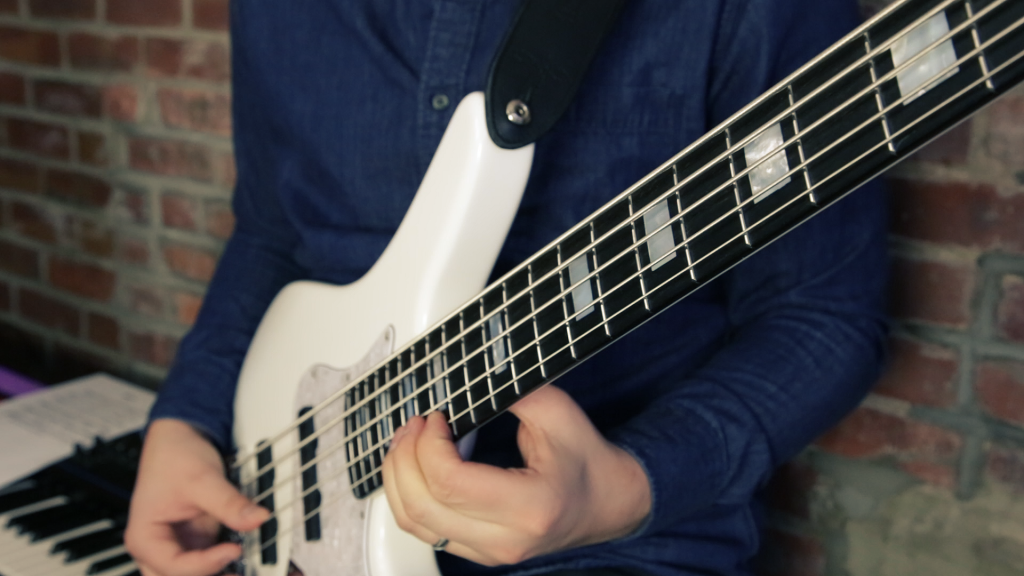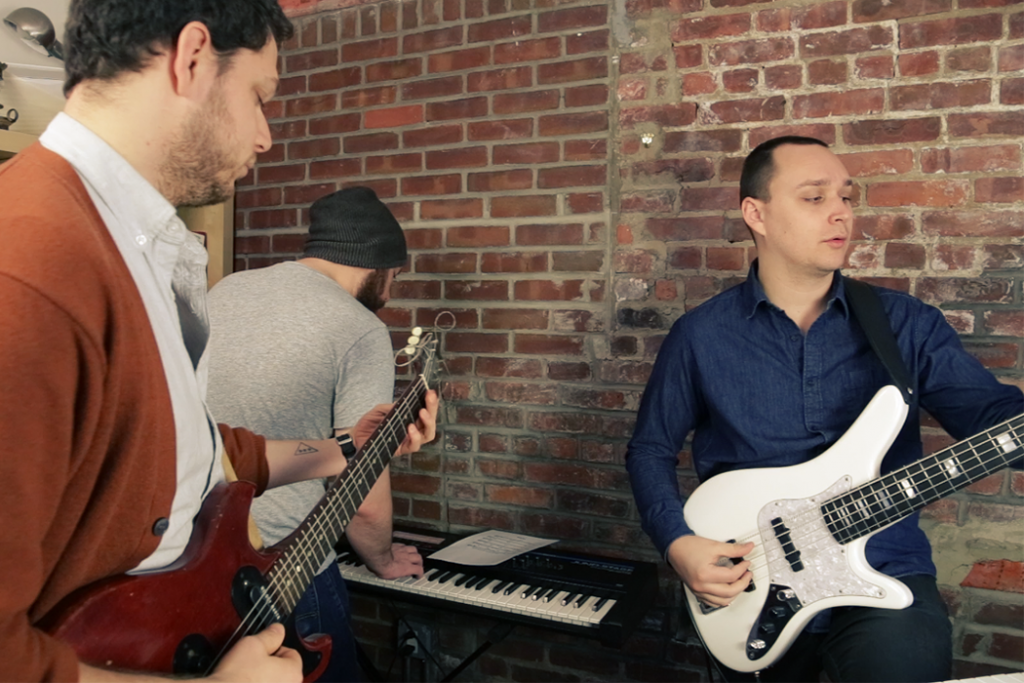+ Learn to craft more compelling beats and warped, broken rhythms with Son Lux’s Ian Chang. His innovative course is out now on Soundfly.
If an artist has just given the best, most effortless and inspired performance of their life, they’re not going to want to change much when the next gig rolls around. Few things will keep musicians working more consistently than the ability to support and flatter a vocalist or soloist — particularly if they’re a joy for the rest of the group to play with!
The players who develop this lucrative reputation tend, as a rule, to share a common set of priorities: Play for the song, support the lead, and allow space for your fellow musicians to work. The development of these instincts is more elusive than you might expect, but you’ll find that one central concept underpins everything: attentive listening!
Avoid the Pitfall of Self-Absorption
It’s probably self-evident, but playing supportively requires paying attention to what you’re accompanying. Less experienced players often get so wrapped up in playing their parts that they stop listening to the lead (not to mention the other players). Even experienced players can fall victim to tunnel vision, particularly if they’ve been asked to replicate a complex or repetitive part from a recording.
We can guard against this by periodically checking in with ourselves to make sure we’re hearing not only every word of the vocal but also every note our bandmates are playing.
If the leader or musical director stops the band for any reason in rehearsal, ask yourself, “Can I sing the last phrase the bassist played?” or, “Was the drummer on hi-hat or ride cymbal in that section?” Details like these can inform every decision you make, so it’s essential to stay engaged.
Awareness of your surroundings helps you choose the absolute perfect thing to play at any given moment (not to mention being able to quickly diagnose problems when things aren’t gelling).
Study the Masters
Refine your skills by going to the source. Listen intently to as many recordings from great rhythm sections as possible, including (but certainly not limited to):
- The Funk Brothers (Detroit)
- The Swampers (Muscle Shoals)
- The Wrecking Crew (Los Angeles)
- The A-Team (Nashville)
- Count Basie Orchestra rhythm section
- Miles Davis’ second quintet
- The 827 Thomas St. Band (Memphis)
- The Hodges Brothers/Hi Rhythm Section (Memphis)
- The MGs (Memphis)
- The Ahmad Jamal Trio with Israel Crosby and Vernell Fournier
- The JBs (with James Brown)
- Any number of New York-based ad-hoc session groups without catchy names
When you find a record of a masterful rhythm track, listen through five or six times. First, hear how the whole section works together, then focus on each band member’s part on successive passes — once to hone in on bass, once to listen in detail to drums, etc. — before giving a more informed listen to the entire arrangement again.
Pay attention to how the musicians play interrelated parts, and to what each musician adds. What is each player’s role? Does the time feel mechanical? Loose? Danceable? Impressionistic? What makes it that way? How does each musician advance that overall aesthetic?
Continual study of the great rhythm sections, along with experience in the trenches, will help develop your ever-important group playing instincts.
Know What You’re Working With

To help an artist sell a piece emotionally, it pays to really know the song.
Although I’m a fluent sight-reader, I like to memorize music I’m performing whenever possible, even for one-offs. This allows me to keep my attention (and eyes) off the page and on the artist and my bandmates. It gives me a chance to check out the lyrics thoroughly in order to make sure I’m helping the artist convey an appropriate emotion (rather than just playing correct notes in time). What’s more, I personally find that music stands can be a detriment to stage presence; an almost literal barrier between me and the audience.
Even if a chart is necessary due to time constraints, make sure to know enough about the song to be able to set up section changes effectively and with appropriate dynamics.
Play Collaboratively

There are many traditions of rhythm-section playing, each with its own conventions, but we can nevertheless make a few generalizations about group function. Most importantly, make sure that what you’re playing is helping the music. If it’s not, or if you’re not sure, then there’s a good chance it’s doing the opposite!
Whatever you play, do so with purpose and with an idea of how it relates to the rest of the parts. Find something to add that serves a need within the music. Aspire to do more than merely fill space.
A common pitfall among less experienced players is to simply latch onto and mimic a part another band member is already playing. Sometimes unison or double parts are effective, but there’s a big difference between intentional artistic choice and unimaginative arranging. Leave space for give and take with your bandmates. If there’s a bar between vocal phrases that could use some decoration, a response (or obligato) from the bassist or guitarist might be appropriate — but perhaps not both at once.
I’d advise against trying to shoehorn your hottest licks or newly practiced fills in every available space. When your job is to serve the song and support the lead, your taste and discretion will impress people far more than your chops.
Nowhere will that taste and discretion be more vital than in a group with multiple instruments occupying similar roles or registers (multiple guitars, multiple keyboards, Wurly and guitar, etc.). In those situations, it’s often beneficial to play fewer notes and leave more space, and it’s essential to make sure there’s clear intent behind every single note.
If you play a phrase or part, try leaving space for other musicians to answer it. If they leave space for you, answer them. If they’re playing in a high register, see if there’s space for you in a lower register. Although maximum clarity of intent comes from a specific, consistent part, in many styles, that’s not always necessary. Just try to establish some sort of logic and continuity with the general role you’ve staked out for yourself and the role you’re leaving for the other players.
Learn more about writing space and syncopation into your parts in the following video, courtesy of Writing Funk Grooves for Drum and Bass.
Finally, if there’s already too much clutter in the ensemble, don’t hesitate to lay out. If you can’t think of anything that would make the music better, there is no shame in waiting until you can.
+ Read more on Flypaper: “Why ‘Sympathy For The Devil’ Should Have Never Been a Hit”
Follow the Leader
Do whatever it takes to enhance the emotional and dynamic arc established by the lead voice or instrument. If the singer is in her lowest register singing quietly, play quietly or sparsely enough that the audience can understand every word. If she’s singing the very top note of her range in full belt, don’t leave her exposed; support her with the requisite density, volume, and intensity!
And it has to be said: If she goes to the bridge two bars too early, then that’s where the bridge is tonight. Your job is to have the artist’s back — no matter what. You don’t want to take the audience or the performer out of the moment, and there’s no medal for being correct.
Blend Your Rhythm Section with the Entire Ensemble

Just as a player’s part can take up too much space within the group, so too can their sound. Make sure the tuning of your drums, the keyboard effect you’ve chosen, or the timbre of your bass or guitar is complementing (and allowing space for) the sound of all the other instruments.
Even if your new instrument, amp, or effect sounds cool on its own, in a group, you have to consider your sound in context as part of a whole.
Here’s the tricky part — a sound that works great in a mix might not sound all that good by itself, and vice versa. In a group, a sound that isn’t working is often accompanied by an uncomfortable feeling of being either inaudible or too loud (or, somehow, both at once) with nothing in between.
This all plays into ensemble blend or balance, which is a matter of tone as much as it’s a matter of volume. Particularly in small-to-medium rooms, this blend is usually best achieved onstage and merely reinforced by front-of-house.
Absent in-ear monitors, I typically try to play and balance (keying off of acoustic sources like drums) in such a way that I can hear everything onstage with my own wedge completely off. Provided the vocal is reinforced through the other wedges onstage, I can very often accomplish this.
Speaking of monitors, use them judiciously. Remember that unless you have in-ears, what you have in your mix affects not only you but everyone onstage. Be particularly careful of bass instruments, because low frequencies flying in every direction usually results in a phasey, soupy mess. That doesn’t help anyone hear anything!
In a guerrilla, “line-check-and-play” scenario, some guesswork is usually necessary, but decisions about monitor mixes should ideally not be made until the whole ensemble has played on that stage together. If a well-meaning monitor engineer prematurely asks for monitor requests, don’t be afraid to respectfully ask if you can all play together first, time permitting.
Most of all, decisions about monitoring (like everything else) should be made with intent and purpose — “a little of everything” in your monitor, while a common request, is rarely helpful and often hurtful.
+ Read more on Flypaper: “Why Your Soundcheck Never Sounds the Same as Your Performance”
Communicate Vigilantly
Lastly, make sure you’re open to in-the-moment communication with your artist and band. Eye contact is big, so try to overcome the tendency to withdraw into your own world and stare at your instrument.
Be aware of nonverbal signals that communicate certainty or uncertainty. If the new or fill-in guitarist thinks the bridge is coming up, he or she may look at the bassist with eyebrows raised. If the bassist senses the uncertainty and nods “yes,” the section change becomes instantly clear. A band’s musical director, if there is one, usually gets the gig by being a great listener and by being good with these types of signals. Don’t be afraid to rely on them.
While there’s obviously much more to being a great group accompanist, I always enjoy how easy it is to share the stage with musicians who take these concepts to heart. I don’t think it’s a coincidence that those same players are usually the ones in highest demand.
Keep on Grooving…
Continue your learning with hundreds of lessons on songwriting, mixing, recording and production, composing, beat making, and more on Soundfly, with artist-led courses by Kimbra, Com Truise, Jlin, Kiefer, RJD2, and our new The Pocket Queen: Moving at Your Own Tempo.




